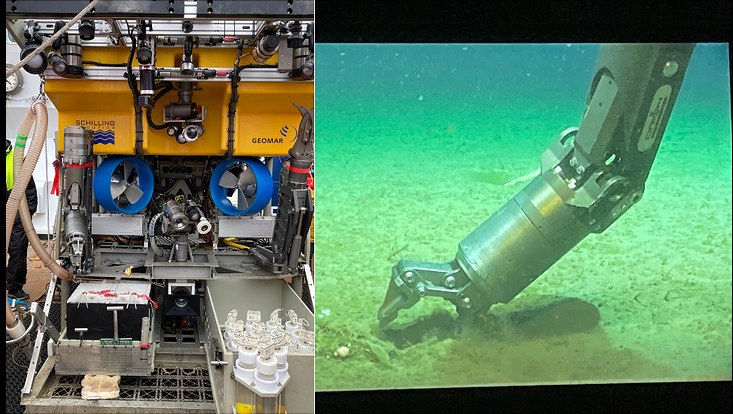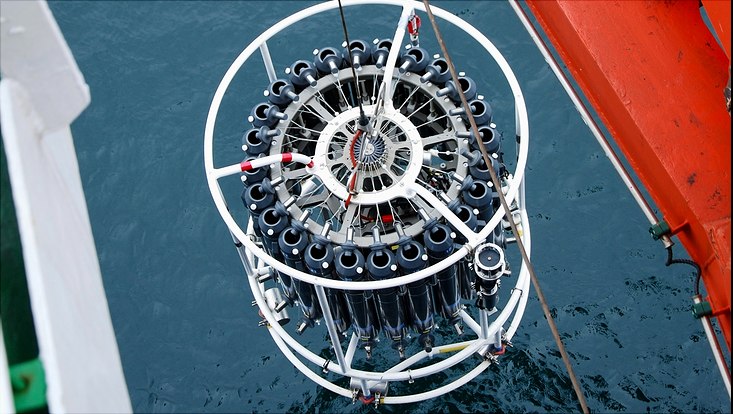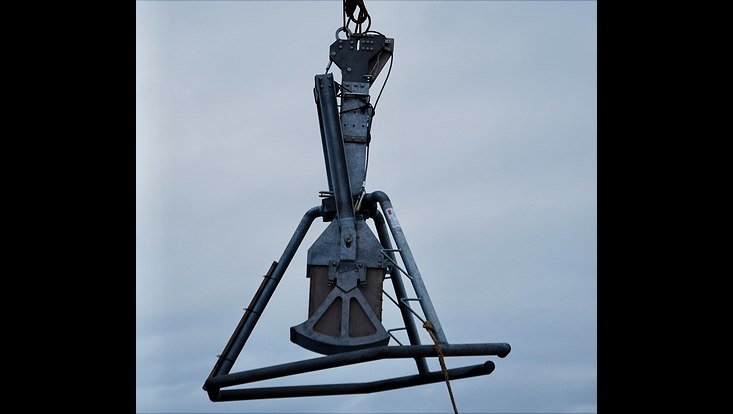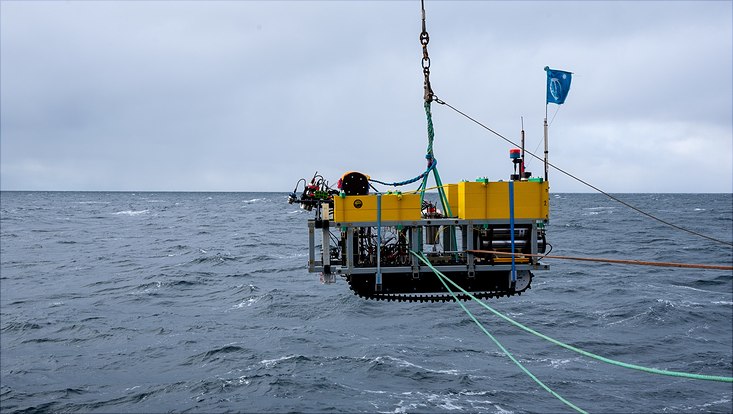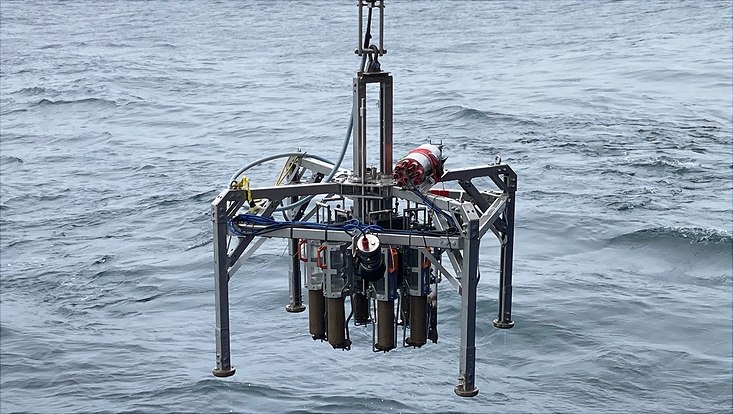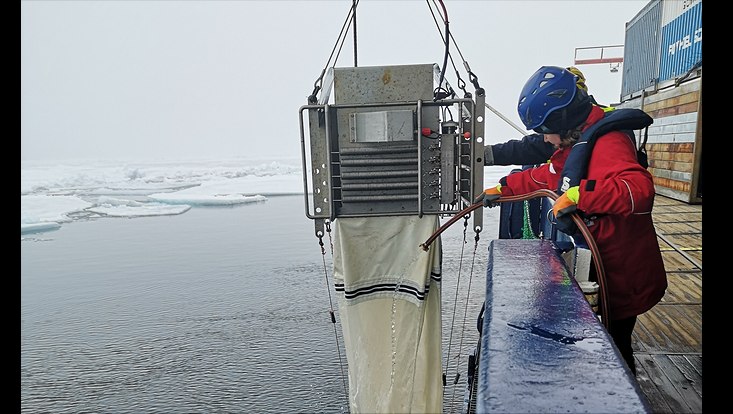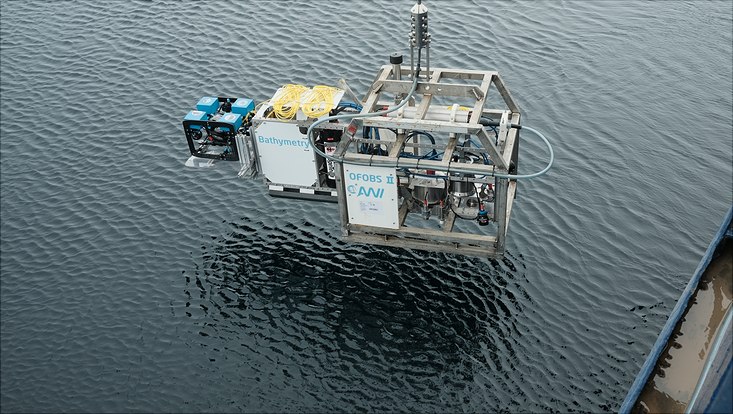6 weeks in the arctic
1 August 2024, by Leonie Bauer
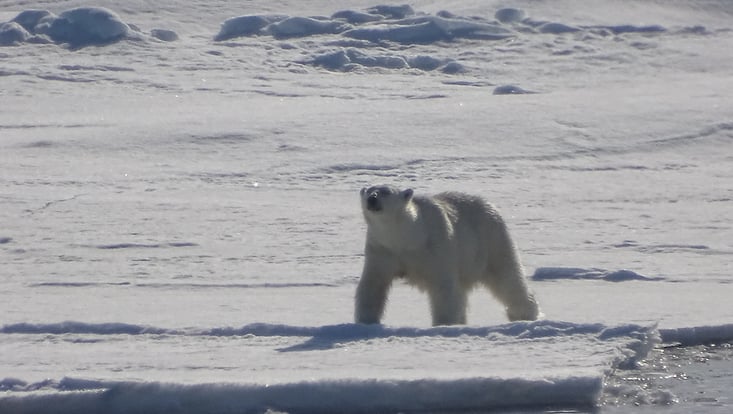
Photo: Petra Gößmann-Lange
In June 2024, the Polarstern set sail for the LTER (Long-Term Ecological Research) HAUSGARTEN Observatory in the Fram Strait for the 25th time - with me on board! As part of a job as a student assistant, I was allowed to take part in the Alfred-Wegener-Institut's (AWI) PS143/1 cruise for 5 weeks and was supposed to take care of the CTD rosette with Florian Krauß (University of Bern).
The AWI's HAUSGARTEN Observatory consists of various stations, some of which have moorings attached and are sampled every year to investigate changes in the local ecosystem. On PS143/1, various devices were used to analyse micro- and macrofauna, material flows, plastic deposits and other parameters. Some of them were very new to me as an oceanography student and it took me a few days before I had learnt all the names, including the English designation, and knew which device to use next. For example, there was the OFOBS (Ocean Floor Observation and Bathymetry System), the EBS (Epibenthic Sledge), the MUC (Multicorer) and the Multinetz. A small overview with photos can be found in the slide show below.
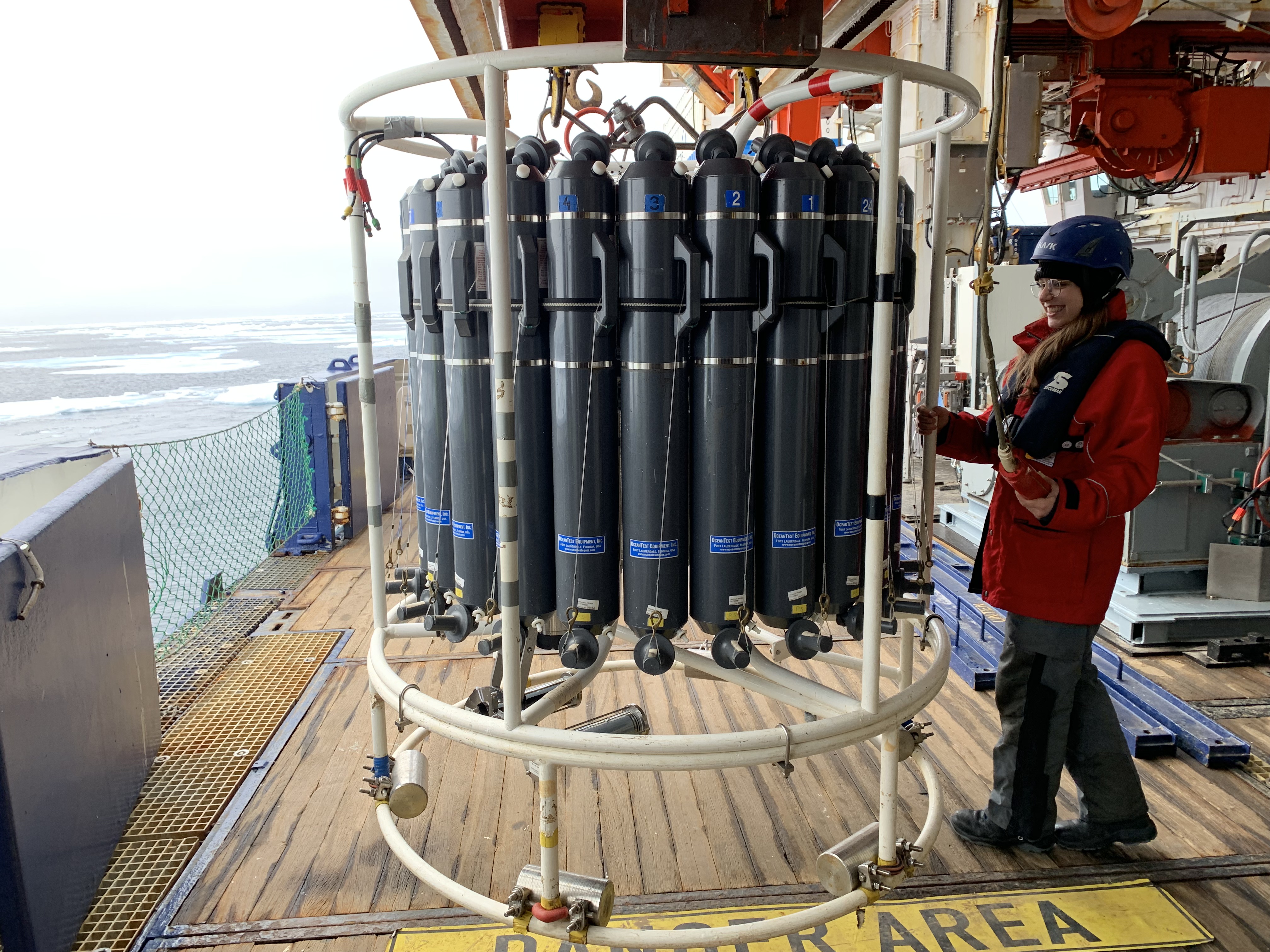
I was more familiar with the CTD (see photo on the left), which I took care of. At least theoretically, I had to deal with CTD data in my studies and it was pretty cool to be able to contribute to the creation of such files. I've also had practical experience with CTD and water samples, but at different scales. The CTD that I had previously used as part of the sea internship in the Jade Bay (see Sea Practical 2023) was not part of an entire CTD rosette and was only reduced to 10-15 m instead of several thousand metres. After a detailed theoretical discussion and a practical introduction on board as well as a test measurement, I felt well prepared and then it was time to start taking samples.
On board, the water samples taken with the CTD rosette from various depths are analysed by different groups. In particular, the PEBCAO (Plankton Ecology and Biogeochemistry in a Changing Arctic Ocean) group, of which I was a member, analysed these samples for (phyto)plankton and biogeochemical substances, filtered them and used them for further experiments.
Between the CTD shifts, I was able to enjoy life on board. This included playing waterball in the ship's own pool, keeping an eye out for whales and polar bears on the bridge, sunbathing on the helideck or watching and helping with the other equipment.
Overall, my time on Polarstern was incredibly exciting and enriching. I would go again in a heartbeat and can highly recommend that every student to take advantage of this opportunity if it arises!
The CTD rosette
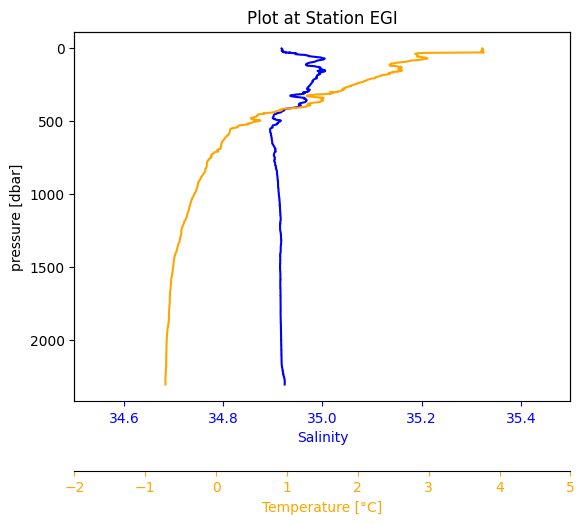
The CTD rosette consists primarily of the ring of Niskin bottles that can take water samples and the CTD, a measuring device that is attached to the bottom of the frame. CTD stands for Conductivity, Temperature and Depth. In addition to conductivity, temperature and pressure (which can be used to determine depth), it also measures other parameters such as chlorophyll and oxygen concentration. On the way down (the downcast), the CTD measures in defined time intervals and thus records a profile of the water column. Such a profile is shown in the figure on the right. Shortly before the bottom, the CTD is being stopped and then moved upwards again. On the upcast, the bottles are then closed at the desired depth with a mouse click on the PC.

